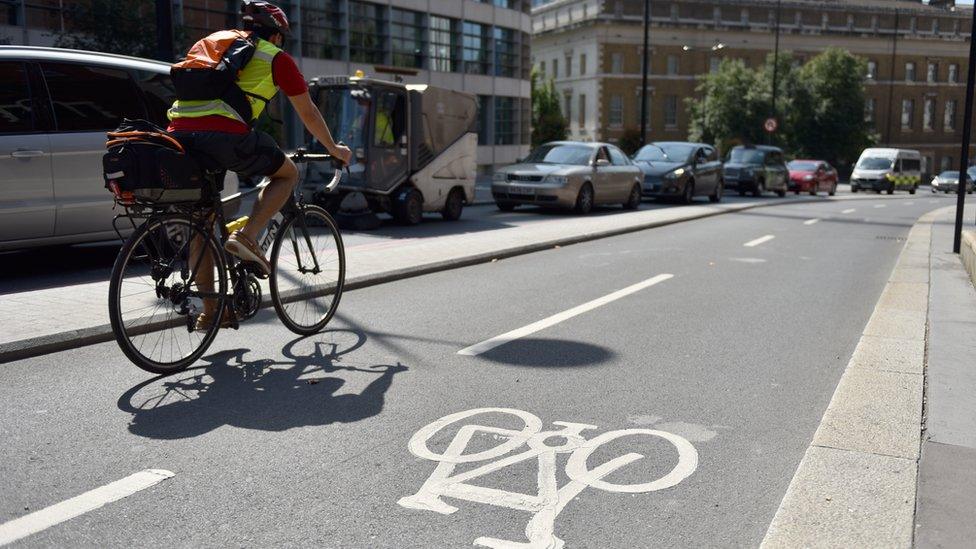NICE: New roads should prioritise cyclists and pedestrians
- Published
- comments

Pedestrians, cyclists and public transport should be given priority over cars when roads are built or upgraded, to encourage more physical activity, the UK's health watchdog has said.
The National Institute for Health and Care Excellence says roads should be "safe, attractive and designed" to help people use their cars less.
It has issued a set of for planners and local authorities.
The Department for Transport said it supported such policies.
NICE cited concerns over obesity levels as well as research suggesting physical activity can prevent and manage chronic conditions and diseases - including some cancers, heart disease, type 2 diabetes and depression.
It said: "Transport systems and the wider built environment can influence people's ability to be active."
NICE deputy chief executive Gillian Leng added: "Getting people to be more physically active by increasing the amount they walk or cycle has the potential to benefit both the individual and the health system.
"People can feel less safe when they walk or cycle compared with when they drive. We've got to change this."
NICE said it was important for planners to consider older people and those with limited mobility.
This is how the Italian city of Bologna is getting people to leave their cars behind
Pavements should feature bumps, grooves and anti-glare surfaces to help those with visual impairments, it said.
The health body also recommended:
Ensuring new and refurbished footways, footpaths and cycle routes link to existing routes
Widening footways and introducing cycle lanes
Introducing traffic-calming schemes to restrict vehicle speeds
Paying more attention to public transport in rural areas where services may be limited
Improving public transport to parks and other green spaces
The Department for Transport said its own guidance "is crystal clear that street design should explicitly consider pedestrians and cyclists first".
Steve Gooding from the RAC Foundation said new road building was rare and only usually took place on housing estates.
He said: "It's all very well making provision for walking and cycling... but if the shops, schools and doctors' surgeries that people need to get to are still miles away, then for many the car will remain the most practical method of travel."
A on the draft guidelines from NICE runs until 1 February.